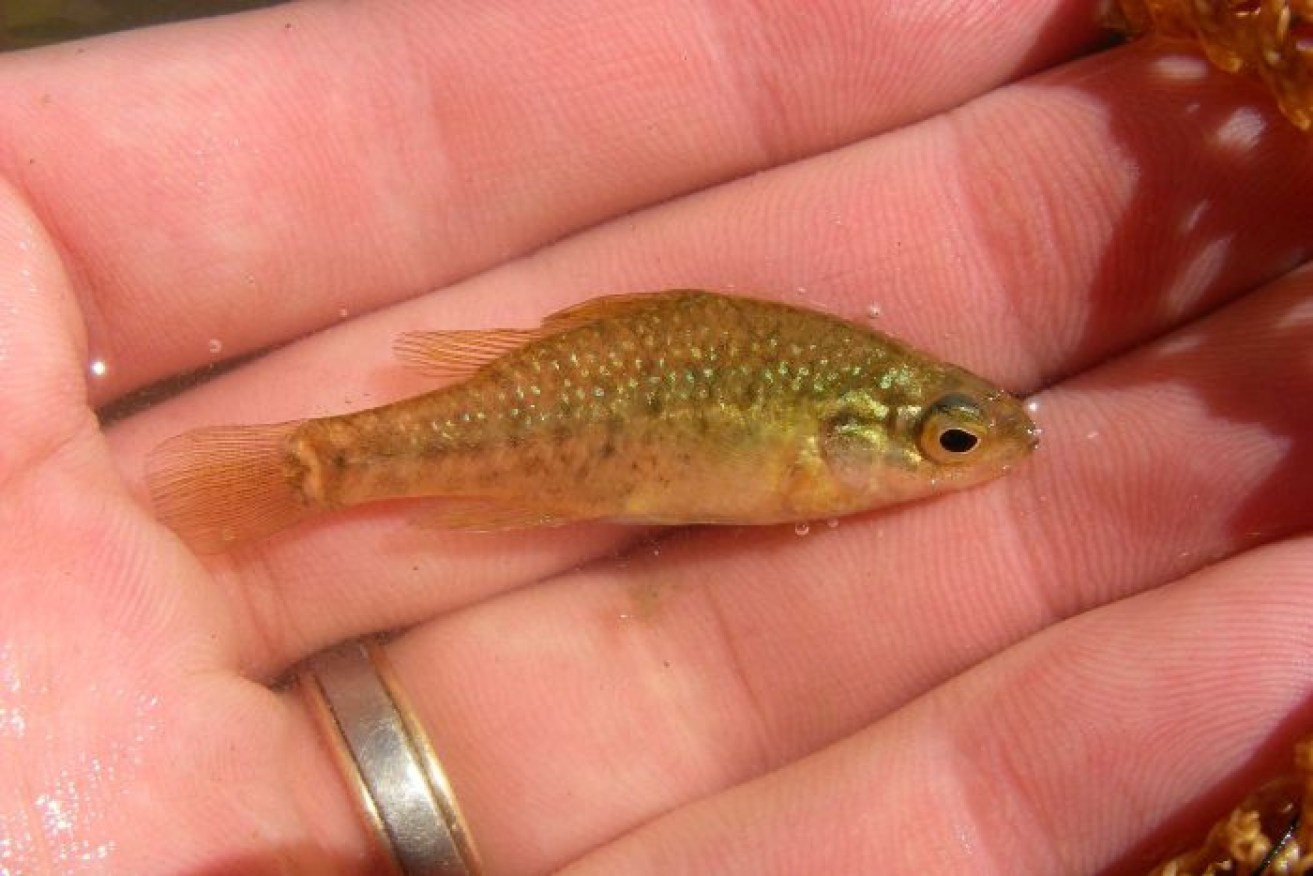Murray-Darling Basin’s first fish extinction feared as surveys fail to locate pygmy perch

Yarra pygmy populations initially crashed during the millennium drought that began in 2001. Photo: Supplied
A freshwater perch could be the first fish species driven to extinction in the Murray-Darling Basin, after repeated surveys have failed to find it.
The Yarra pygmy perch has traditionally been found in the Lake Alexandrina region near the mouth of the Murray River, but hasn’t been seen there in three years.
That’s despite extensive searching throughout the region in successive surveys funded by the Murray-Darling Basin Authority (MDBA) and the Commonwealth Environmental Water Office (CEWO), and state and federal governments.
Although it is too early to say definitively that the fish is extinct in the Murray-Darling, surveyor Scotte Wedderburn from the University of Adelaide said he had grave fears for the future of the species in the region.
“I personally don’t like the idea of a fish going extinct, or any species going extinct in the catchment. It becomes an indication of where the system is heading – if we start to lose a fish species, where is it going to stop?”

Three years of intensive sampling have failed to locate any perch. Photo: ABC Science/Ann Jones
The last Yarra pygmy perch were found in Lake Alexandrina in 2015, but these were from captive-bred stock that had been reintroduced in an attempt to restore the wild population.
The last wild fish hasn’t been detected in the region in over 10 years.
The population initially crashed when much of their habitat dried out completely during the millennium drought that began in 2001.
Nets full of carp, but no pygmy perch
The early impacts of the drought struck Sally Grundy’s farm in the mouth of the Murray, when her stock started dying from drinking the increasingly salty water lapping at her island property.
Then things got worse.

Sally Grundy’s livestock started dying during the drought as sea water pushed further up the mouth of the river. Photo: ABC Science/Ann Jones
“The water disappeared and we could drive off our island and drive 7 kilometres up towards Lake Alexandrina over sand, where normally you’d be completely underwater,” she said.
While the Murray-Darling system has always been characterised by boom and bust, she said there wasmore to this story than natural weather variation.
“Us being the last farm on the River Murray, we were the first people affected.”

Sally Grundy was able to drive from her island property to Lake Alexandrina during the drought. Photo: ABC Science/Ann Jones
After the drought broke, it was the pest species like carp and mosquito fish that came back first, according to wetlands officer Kate Mason, who works with Natural Resources South Australia.
“We’re talking one [sample] net … we were easily catching 30,000 juvenile carp in one net, post drought,” she said.
“The millennium drought was the period where we needed to intervene. There were certain species that were so at risk, we would have lost them.”
At the time, scientists and volunteers worked frantically to save some of the Yarra pygmy perch from Lake Alexandrina, which they put into carefully selected dams on rural properties in the Mount Lofty region.
At first the captive populations boomed. So much so that researchers were able to reintroduce 7000 fish to the lake.

Reintroduction of the fish following the millennium drought appears to have failed. Photo: ABC Science/Ann Jones
But the reintroduction failed to take, and in the meantime, disaster struck some of the reserve dams where the fish were being kept, according Nick Whiterod, who has been involved with the rescue attempt.
“The water level [in the dams], just one summer I got a call from the land owner and he said ‘it’s plummeted’. So it dropped probably 4 metres down to a metre,” Dr Whiterod said.
That was about three years ago. Dr Whiterod said they hadn’t got any fish back from there since.
Time is running out
They were able to salvage some of the Yarra pygmy perch in the dams and they have been trying to breed numbers up again in captivity, but Dr Whiterod describes the situation as “precarious”.
The long-term hope is to be able to attempt another reintroduction of the fish into the Murray-Darling.
But in the time that they’ve been keeping the breeding stock alive, inbreeding has significantly reduced the genetic diversity of those remaining fish.
This, together with small numbers of fish, and the previous failure of the reintroduced fish to survive, mean hope is fading, according to Dr Wedderburn.
“It’s basically almost past the point of no return,” he said.
“We’ll probably have another year or so at the most to get these fish that are in captivity bred up to reintroduce into the wild.”

The Murray-Darling is home to 49 species of fish. Photo: ABC Science/Ann Jones









